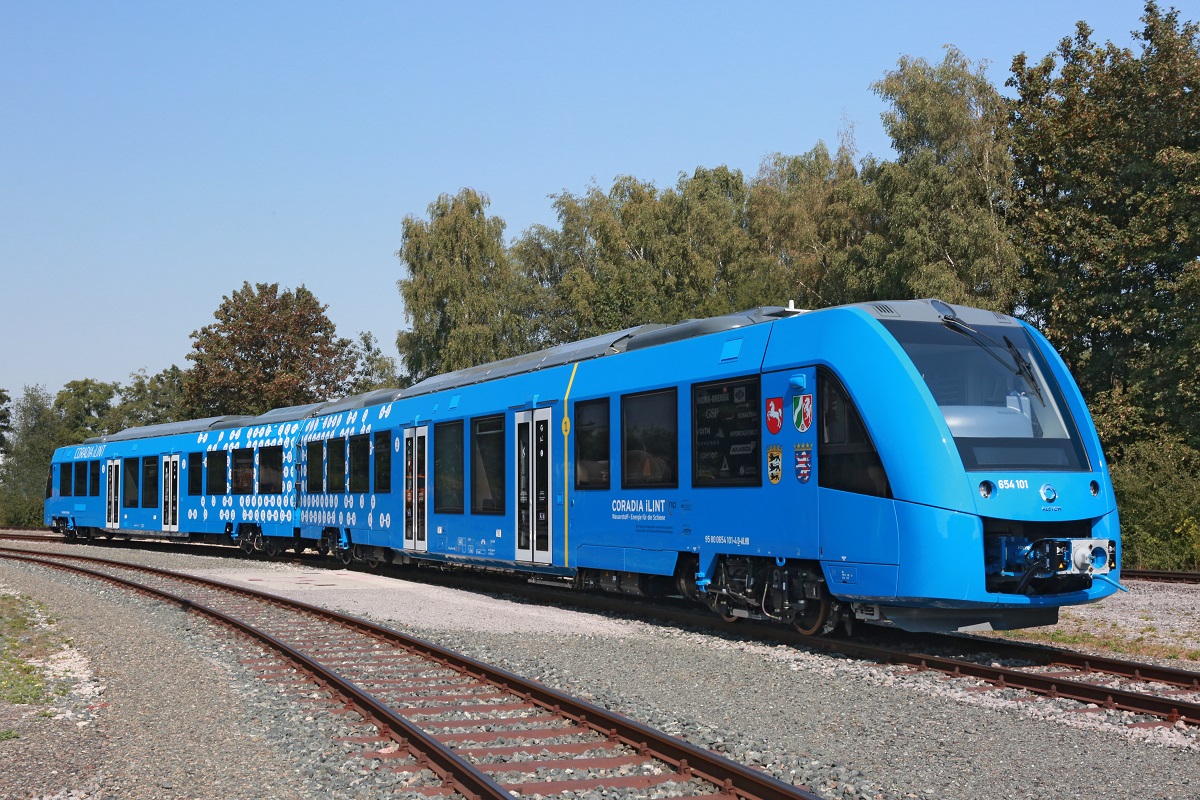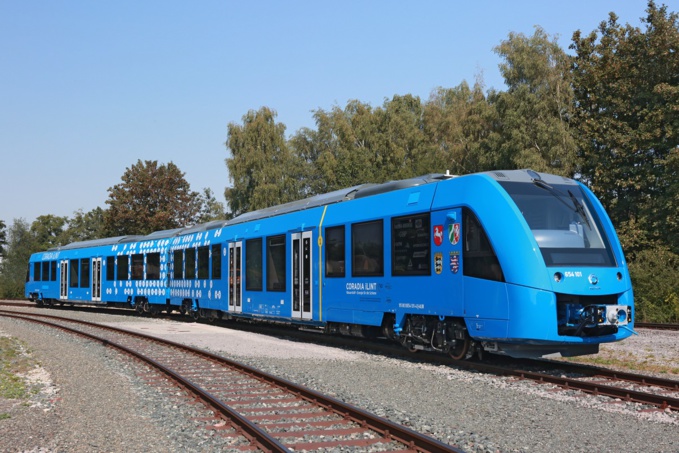Coradia iLint’s top is a base for a tank with hydrogen fuel, and a fuel power cell, which converts hydrogen energy into electric current. The train can reach speeds of 140 km/h. One filling is enough for 600-800 kilometers. The manufacturer is planning to have testing finished already by the end of 2016.
The technology of converting hydrogen into electrical current is designed for mass production. Its advantages are absence of harmful emissions, as contrasted with diesel engines, power saving, and quietness. The train is equipped with a power storage device that is controlled by an intelligent power management system.
Hydrogen for the trains will be delivered from enterprises which obtain it as a byproduct during production of various chemicals. Previously, hydrogen has been burnt, but modern researchers found a better way to use it.
Hydrail also solves issue of noise, which is particularly important for people whose homes are located close to the ways. The hydrogen train emits much less noise than a diesel one. The only things heard are quiet sound of wheels, and air resistance.
German newspaper Die Welt reports that the train starts to run on the route Buxtehude - Cuxhaven in Lower Saxony in December 2017. According to the Minister of Transport of Lower Saxony Olaf Lies, Alstom will supply 14 Coradia iLint trains before the end of 2020. In the future, hydrogen trains will be used in three German states - North Rhine-Westphalia, Baden-Württemberg and Hesse.
The innovative transport will replace 4 th. diesel regional trains operating in Germany at non-electrified railway sections. Alstom added that the Netherlands, Denmark and Norway also expressed interest in such trains.
Several other models of hydrogen trains have already been presented to public earlier. Scientific community has already invented a new term Hydrail (short for hydrogen rail) to indicate the entire rail with a hydrogen engine, including trains, trams, etc. Every year since 2005, conferences on Hydrail are held in different cities around the world. The first prototype of a hydrogen-powered train fuel was introduced in Japan in 2004. Last year, China South Rail Corporation has demonstrated its own tram on hydrogen fuel.
Hydrogen-powered railway vehicles in large quantities are not common yet, but cars on hydrogen fuel are already being produced. Such cars are produced by giants like Toyota, Honda, Hyundai, Daimler, Audi, BMW, Ford, Nissan and others.
According to a report published by Information Trends, hydrogen cars will become widespread in the coming decades. Their sales are expected to amount to only 100 thousand in 2017. However, already in 2026 they will rise to 1.1 million, and to 5 million - in 2032.In monetary terms, sales of such cars will reach $ 250 billion a year by 2032.
source: welt.de
The technology of converting hydrogen into electrical current is designed for mass production. Its advantages are absence of harmful emissions, as contrasted with diesel engines, power saving, and quietness. The train is equipped with a power storage device that is controlled by an intelligent power management system.
Hydrogen for the trains will be delivered from enterprises which obtain it as a byproduct during production of various chemicals. Previously, hydrogen has been burnt, but modern researchers found a better way to use it.
Hydrail also solves issue of noise, which is particularly important for people whose homes are located close to the ways. The hydrogen train emits much less noise than a diesel one. The only things heard are quiet sound of wheels, and air resistance.
German newspaper Die Welt reports that the train starts to run on the route Buxtehude - Cuxhaven in Lower Saxony in December 2017. According to the Minister of Transport of Lower Saxony Olaf Lies, Alstom will supply 14 Coradia iLint trains before the end of 2020. In the future, hydrogen trains will be used in three German states - North Rhine-Westphalia, Baden-Württemberg and Hesse.
The innovative transport will replace 4 th. diesel regional trains operating in Germany at non-electrified railway sections. Alstom added that the Netherlands, Denmark and Norway also expressed interest in such trains.
Several other models of hydrogen trains have already been presented to public earlier. Scientific community has already invented a new term Hydrail (short for hydrogen rail) to indicate the entire rail with a hydrogen engine, including trains, trams, etc. Every year since 2005, conferences on Hydrail are held in different cities around the world. The first prototype of a hydrogen-powered train fuel was introduced in Japan in 2004. Last year, China South Rail Corporation has demonstrated its own tram on hydrogen fuel.
Hydrogen-powered railway vehicles in large quantities are not common yet, but cars on hydrogen fuel are already being produced. Such cars are produced by giants like Toyota, Honda, Hyundai, Daimler, Audi, BMW, Ford, Nissan and others.
According to a report published by Information Trends, hydrogen cars will become widespread in the coming decades. Their sales are expected to amount to only 100 thousand in 2017. However, already in 2026 they will rise to 1.1 million, and to 5 million - in 2032.In monetary terms, sales of such cars will reach $ 250 billion a year by 2032.
source: welt.de



















